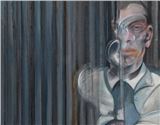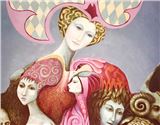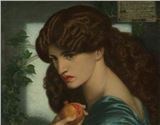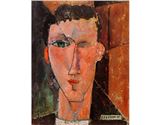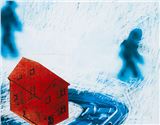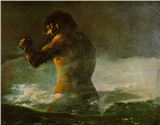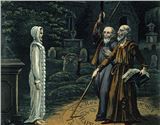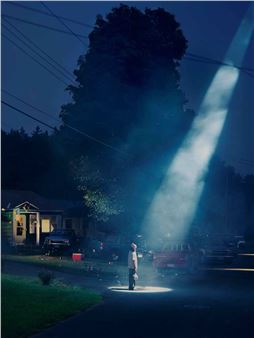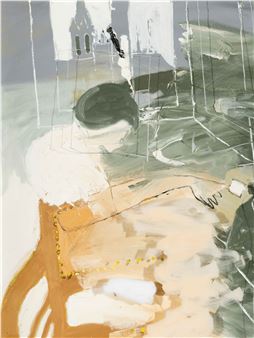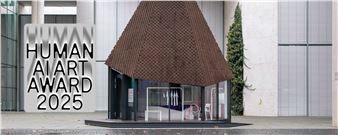TELE-Gen
The early 1960s were crucial for the development of TV into the first visual mass medium while at the same time they were the prelude of the artistic and theoretical discussion of television, before video art even existed. The "TV tube” was dealt with as a sculptural object (Günther Uecker, César), the TV picture was manipulated and deconstructed (Nam June Paik, Wolf Vostell) and served as a picture generator for drawings, paintings and graphic prints (K.O. Götz, Lawrence Weiner, Paul Thek, Andy Warhol) or as a motive for photography and film (Lee Friedlander, Bruce Conner, Dennis Hopper).
Based on TVâ' years of birth 1963/64, the exhibition builds a bridge to the present. The split-up of the once monolithic medium is reflected in painting, drawing, installation, photography and video art as the cross-genre discussion of the "televisual.”
The exhibition spaces divided according to several different topics are dedicated to the analysis, parody and subversion of TV formats: the emotional abyss of talk shows (Christoph Schlingensief, BjГѓВёrn Melhus), the danger of addiction to TV-series (Mel Chin, Melanie Gilligan, Julian Rosefeldt), and the flood of information on news channels (Christoph Draeger/Reynold Reynolds, Christian Jankowski, Mischa Kuball, M + M, Ulrich Polster). Another focus will be laid on the construction of studio sets (Thomas Demand, Michel FranГѓВ§ois, Caroline Hake) and the parading on victims on TV (Yvon Chabrowski, Stefan Hurtig).

Recommended for you
The early 1960s were crucial for the development of TV into the first visual mass medium while at the same time they were the prelude of the artistic and theoretical discussion of television, before video art even existed. The "TV tube” was dealt with as a sculptural object (Günther Uecker, César), the TV picture was manipulated and deconstructed (Nam June Paik, Wolf Vostell) and served as a picture generator for drawings, paintings and graphic prints (K.O. Götz, Lawrence Weiner, Paul Thek, Andy Warhol) or as a motive for photography and film (Lee Friedlander, Bruce Conner, Dennis Hopper).
Based on TVâ' years of birth 1963/64, the exhibition builds a bridge to the present. The split-up of the once monolithic medium is reflected in painting, drawing, installation, photography and video art as the cross-genre discussion of the "televisual.”
The exhibition spaces divided according to several different topics are dedicated to the analysis, parody and subversion of TV formats: the emotional abyss of talk shows (Christoph Schlingensief, BjГѓВёrn Melhus), the danger of addiction to TV-series (Mel Chin, Melanie Gilligan, Julian Rosefeldt), and the flood of information on news channels (Christoph Draeger/Reynold Reynolds, Christian Jankowski, Mischa Kuball, M + M, Ulrich Polster). Another focus will be laid on the construction of studio sets (Thomas Demand, Michel FranГѓВ§ois, Caroline Hake) and the parading on victims on TV (Yvon Chabrowski, Stefan Hurtig).
Artists on show
- Andy Warhol
- Angel Vergara
- Angela Bulloch
- Bea Meyer
- Bjørn Melhus
- Bruce Conner
- Caroline Hake
- Christian Jankowski
- Christiane Baumgartner
- Christoph Draeger
- Christoph Schlingensief
- Dennis Hopper
- Edgar Reitz
- Fabio Mauri
- Günther Uecker
- Harun Farocki
- Isidore Isou
- Joe Biel
- John Cage
- Joseph Zehrer
- Julian Rosefeldt
- Karl Gerstner
- Karl Otto Götz
- Lawrence Weiner
- Lee Friedlander
- M+M
- Matthias Groebel
- Mel Chin
- Melanie Gilligan
- Michel François
- Mischa Kuball
- Nam June Paik
- Paul Thek
- Reynold Reynolds
- Robert Sakrowski
- Simon Denny
- Stefan Hurtig
- Tauba Auerbach
- The GALA Committee
- Thomas Demand
- Tobias Rehberger
- Tom Wesselmann
- Ulrich Polster
- Van Gogh TV
- Vania Heymann
- Wolf Vostell
- Yvon Chabrowski
Contact details


 ARTISTS
ARTISTS
